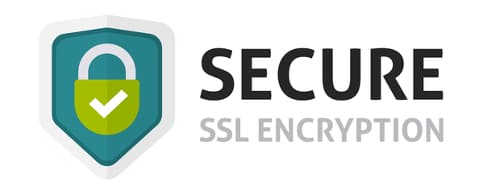Difference between Udyog Aadhar And Udyam
The Government of India started Udyam Registration to replace the old Udyog Aadhar system and make it easier for small businesses (MSMEs) to register. With this new system, any business in India can register quickly and easily without dealing with a long and complicated process. It saves time and effort for business owners.
Earlier, registering a business was time-consuming and confusing. People had to fill out many forms, choose from different categories, and submit lots of documents, which made the process difficult.
But now, with the new Udyam Registration, things are much simpler. You can do everything online in one place. There's no need to upload lots of documents, and the whole process is quick, easy, and hassle-free for anyone starting a business.
Udyog Aadhar was launched in September 2015 by the Ministry of Micro, Small and Medium Enterprises. It was also called the Udyog Aadhar Memorandum (UAM). The main idea behind it was to give small businesses a special ID number so they could easily get government benefits like subsidies, tax discounts, and other support for their growth.
Udyam Portal Online - Easy MSME Registration
If you're planning to start a small business or already running one, you can register it as an MSME (Micro, Small, or Medium Enterprise) through the Udyam Registration Portal.
The Government of India started this new process called Udyam Registration on July 1, 2020, to make MSME registration simple and hassle-free.
You can apply online by just filling out a form based on self-declaration. The best part is - you don’t need to upload any documents, certificates, or proof.
Although MSME registration is not mandatory, it comes with many benefits, such as:
- Easy access to business loans and credit
- Tax benefits
- Help with setting up your business
- Support in government schemes and subsidies
This article also helps you understand the difference between Udyam Registration and the older Udyog Aadhar system, and which one is better for your business
Benefits of Udyam Registration
Udyam Registration offers several advantages to small business owners in India. Once registered, businesses can easily access bank loans at lower interest rates and get priority in lending. It also makes them eligible for various government schemes, subsidies, and tax benefits, which can help reduce business expenses. The registration process is fully online and paperless, making it quick and hassle-free. Udyam-registered businesses also get support in applying for tenders, licenses, and government approvals. Additionally, they receive protection against delayed payments from clients, especially large companies. For businesses involved in exports, the government provides special assistance to help them grow globally. Overall, Udyam Registration helps small and medium businesses become stronger, more competitive, and better supported by government initiatives.
What’s the Difference Between Udyog Aadhar and Udyam Registration?
Udyog Aadhar and Udyam Registration are both ways to register small businesses (MSMEs) with the government, but Udyam is the newer and improved version.
Udyog Aadhar was started in 2015, and it allowed business owners to register with just their Aadhar number. However, the process had less verification and wasn’t fully connected to systems like PAN and GST.
Udyam Registration, launched on July 1, 2020, is more advanced and fully online. It connects directly with your PAN and GST details, making the process more accurate and reliable. Also, under Udyam, a business can get a registration certificate easily without uploading any documents.
Comparison Between Udyog Aadhaar and Udyam Registration
| Point of Difference | Udyog Aadhaar | Udyam Registration |
|---|---|---|
| 1. Year of Introduction | Launched in 2015 by the Ministry of MSME. | Introduced on 1st July 2020 to replace Udyog Aadhaar. |
| 2. Purpose | To provide an easy, paperless process for MSMEs to register using basic self-declared info. | To create a more accurate, digitally verified system integrated with PAN, GST, and IT systems. |
| 3. Registration Process | Based on self-declaration. No backend verification of details. | Fully online and automated. Validate information through PAN and GSTIN databases. |
| 4. Documents Required | Only an Aadhaar number was required to register. | Aadhaar, PAN, and GSTIN are mandatory (except in special cases like early-stage proprietors). |
| 5. Number of Registrations | One person could obtain multiple Udyog Aadhaar numbers for different businesses. | Only one Udyam Registration per enterprise is linked to the PAN number. |
| 6. Data Verification | Details were manually filled and not cross-verified with other departments. | Automatic verification from Income Tax and GST databases for investment and turnover figures. |
| 7. MSME Classification | Based on self-declared investment in plant & machinery (for manufacturing) or equipment (for services). | Classification based on both investment and turnover, aligned with updated MSME definitions. |
| 8. Certificate Issuance | A certificate was generated immediately after submitting the form. | A certificate is issued after system-level verification of entered data. |
| 9. Validity & Updates | No auto-update mechanism. A manual update is needed if any detail changes. | Auto-updates yearly based on ITR and GST returns filed by the business. |
| 10. Legal Backing | Covered under the MSMED Act, 2006 but lacked digital integration. | Also under the MSMED Act, 2006 but aligned with digital compliance frameworks. |
If you're a small business owner or planning to start one, getting your business registered under Udyam is a smart move. It not only gives your business official recognition but also opens the door to many government benefits like easy loans, tax relief, and support schemes.
So if you haven’t registered yet, don’t wait make the most of what the government is offering and grow your business with confidence.
If you need help, just fill out the Udyam enquiry form, and one of our team members will call you through the Udyam helpline number.
Follow Us On Facebook
Subscribe to our YouTube channel today - Click Here
- Apply For Udyam Registration


